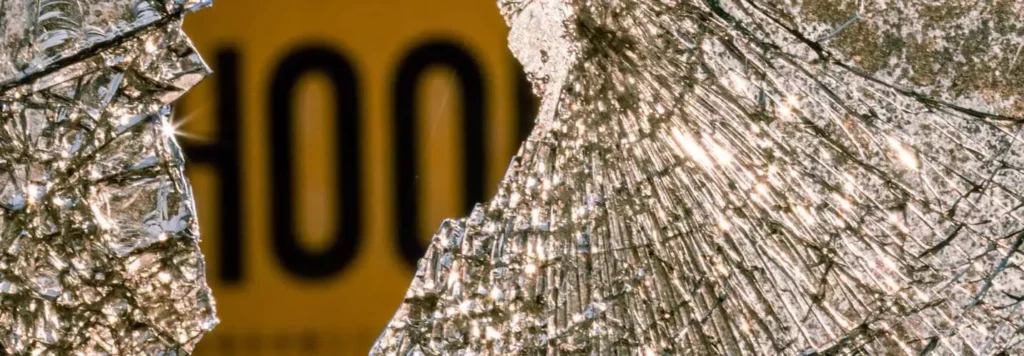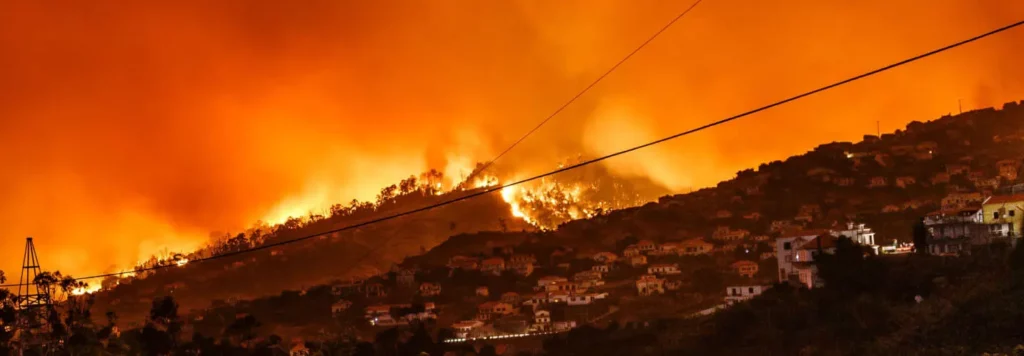EDUCATION
SAFETY AND SECURITY GLAZING FOR SCHOOLS

With its ability to add daylight, vision and transparency to any space, it is no surprise that school architects and administrators favor glass in their buildings. It can be found in windows, walls, doors, storefronts, skylights or even floors. And with today’s advanced glazing products offering additional thermal or acoustic performance; protection against threats such as fire, hurricane, tornado, forced entry, ballistic or blast; or privacy, bird-friendly or decorative make-ups, the opportunities to add a sense of openness to any space becomes endless.
When it comes to selecting the appropriate type of safety and security glazing, its important to first identify who or what you are trying to protect, the potential threat or hazard you are protecting against, and the level of protection you require. The last consideration will help determine the testing or certification that the glazing assembly needs to meet.
In our article, “Why Glass Safety Matters,” we outline the different ways glass keeps our schools safe: natural surveillance, occupant comfort, impact safety, fire safety, active shooters and natural disasters. This article focuses on the most common types of safety and security glazing that schools can use today.
Tempered and Laminated Glass in Areas Subject to Human Impact
With all the activity going on in schools, it is import to protect against a student or staff coming into accidental impact with glass in doors, sidelites, corridors, gymnasiums and more. Section 2406 of the International Building Code requires that all glass used in doors, sidelites and other areas subject to human impact loads must meet CPSC 16 CFR 1201 safety glazing requirements. Two categories are established:
- Cat. I – meets 150 ft. lbs. of impact resistance. Required for glass with an exposed surface area of 9 sq. ft. or less.
- Cat. II – meets 400 ft. lbs. of impact resistance. Required for glass with an exposed surface area greater than 9 sq. ft.
Annealed glass, traditional wire glass or unfilmed/unlaminated ceramic glass cannot meet these safety requirements and cannot be used in doors, sidelites and other hazardous locations because they pose a threat to building occupants.
Read More: Wired Glass: A 2023 Update
Watch Video: Wired for Danger: A Case for Replacing Wired Glass in Schools
To prevent these injuries, schools can use either tempered glass or laminated glass in these locations to meet the CPSC safety glazing requirements, and are marked as so.
Tempered glass is created by heating regular glass to a high temperature and then rapidly cooling it, resulting to a product that has 10x the strength of ceramic or wired without the need for films, or lamination, bringing down cost. If it does break, it breaks into small, relatively harmless, and dull-edged pieces when broken, reducing the risk of injury. As an added benefit, tempered glass doesn’t have wires or a tint, giving superior optical clarity
Laminated glass is an assembly made of two or more lites of glass bonded together with an interlayer material, such as PVB, EVA or SGP. When shattered, the glass adheres to the interlayer, preventing it from falling apart while maintaining visibility.

Laminated Glass for Forced Entry, Ballistic and Blast
Depending on the make-up and interlayers used, laminated glass can provide various levels of security protection, including protection from break-ins, forced entry, bullets, or even blast forces.
The National Glass Association (NGA) issued a technical paper on School Security Glazing. Here, it outlines the different levels of glazing penetration resistance:
1. Basic – withstands accidental human impact, with requirements for glass fragments to avoid injury. This is discussed in the previous section, Tempered and Laminated Glass in Areas Subject to Human Impact.
2. Enhanced – typically burglar resistant glass as a deterrent to vandalism or smash-and-grab crimes with the use of hands, elbows, fists or general burglary tools (such as a hammer).
3. Ballistic Protection – designed as a safety barrier to resist bullets and related flying fragments. It can be made up of different types of glass, polycarbonates, interlayers and other high strength materials. The industry typically follows either UL 752 or NIJ Standard 0801.01 for the different levels of bullet resistant materials based on the ammunition used.
4. Forced Entry – this is glass designed to increase the time required to gain entry. The purpose is to delay an attacker using handheld or hand thrown objects from entering a building to enable time for lockdown procedures or for first responders to arrive at the scene.
5. Enhanced Forced Entry – glass designed to meet forced entry requirements after being weakened by a ballistic attack. This glass does not offer ballistic protection. The bullet can still pass through the glass. As with the previous section, the purpose is to delay the attacker from gaining entry so that lockdown procedures and first responders can arrive at the scene.
In 2022, the glass industry came together and published ASTM F3561: Standard Test Method for Forced-Entry-Resistance of Fenestration Systems After Simulated Active Shooter Attack. It is designed to simulate a shooter trying to breach the entrance by shooting projectiles on the glass with the intention of weakening it. The test includes 10 shots from a single weapon and ammo type (AR-15 rifle) that is fired onto the glazing in a tight burst. The test also includes impacts after the initial weakening. This is done with a 100-pound impactor at center mass. There are eight different drop heights with the impactor at the same weight. ASTM F3561 is currently being proposed as a minimum standard for schools.
Download: School Security: Windows and Doors Respond First
6. Multiple Forced Entry Assault (Ballistics + Forced Entry) – combines ballistic protection with forced entry. Glass products in this category will not allow bullets to penetrate the glazing and withstand forced entry attack after its been weakened by a ballistic attack.
7/ Blast Resistance – glass that is engineered to withstand the shock waves, pressure, and flying debris generated by an explosion, such as a bomb blast. It is typically used in government buildings, embassies, court houses, military bases and other high security, critical facilities.

Laminated Glass for Natural Disasters
Laminated glass make-ups also provide protection in the event of natural disasters such as hurricanes, tornadoes or earthquakes.
Certain areas in the country are periodically exposed to extreme weather events such as hurricanes and tornadoes. While both are characterized by extremely strong, swirling winds, they differ in size and duration. According to NASA’s website, “tornado wind speeds may reach 100 to 300 mph and cause havoc on the ground, but tornadoes typically last only a few minutes and rarely travel more than 10 or 20 miles along the ground… Hurricanes, on the other hand, are large-scale circulations that are 60 to over 1,000 miles across.”
Both hurricanes and tornadoes can directly cause material and joint failure related to the exterior windows, glazed doors, storefronts or curtain walls in a building. Of even greater concern is the creation of windborne missiles that can impact the glass, causing breakage and fallout.
Other areas on the county are more prone to earthquakes. During these events, the vibrations and lateral movement can cause the glass in windows and curtain walls to shatter, causing significant damage.
For schools that are located in areas prone to experiencing hurricanes, tornadoes and earthquakes, having laminated glass with the appropriate make-up and certifications can prevent the potential the threat to occupants and minimize interior property losses.
Fire Rated Glass
Fire rated glass is a life safety product that is required by in code in certain areas of the building, such as exit corridors, exit stairwells, occupancy separations, and property lines. It is used in windows, doors, walls, storefronts, curtain walls and even floors. It brings light and transparency to fire rated areas while allowing for the safe egress of building occupants and some property protection in the event of a fire.
There are two types of fire rated glass:
- Fire Protective Glass (or Fire-Protection-Rated Glass) – contains the visual elements of a fire, which are flames and smoke. This glass type is typically rated up to 45 minutes and are subject to size limitations. Typical examples of fire protective glass include specialty tempered, heat reflective specialty tempered, fire resistive tempered, wired glass, ceramics, and specialty fire protective.
- Fire Resistive Glass (or Fire-Resistance-Rated Glass) – contains smoke, flames and effectively limits the transmission of dangerous radiant heat. This glass type is rated from 60 to 120 minutes are not subject to the size limitations imposed on fire protective glass. Examples include annealed multilaminates with intumescent interlayers and tempered glazing units with intumescent interlayers.
Watch Video: Fire Protective and Fire Resistive Glass Explained
Watch Video: Dangers of Radiant Heat
These safety and security glass products can be used alone or combined to create a multifunctional, high performance glass assembly. They can also be combined with other advanced glass products to provide thermal performance or meet an aesthetic requirement.
If you have any questions or would like to learn more about safety and security glass products, contact SAFTI FIRST at 888.653.3333 or send us an email at info@safti.com.